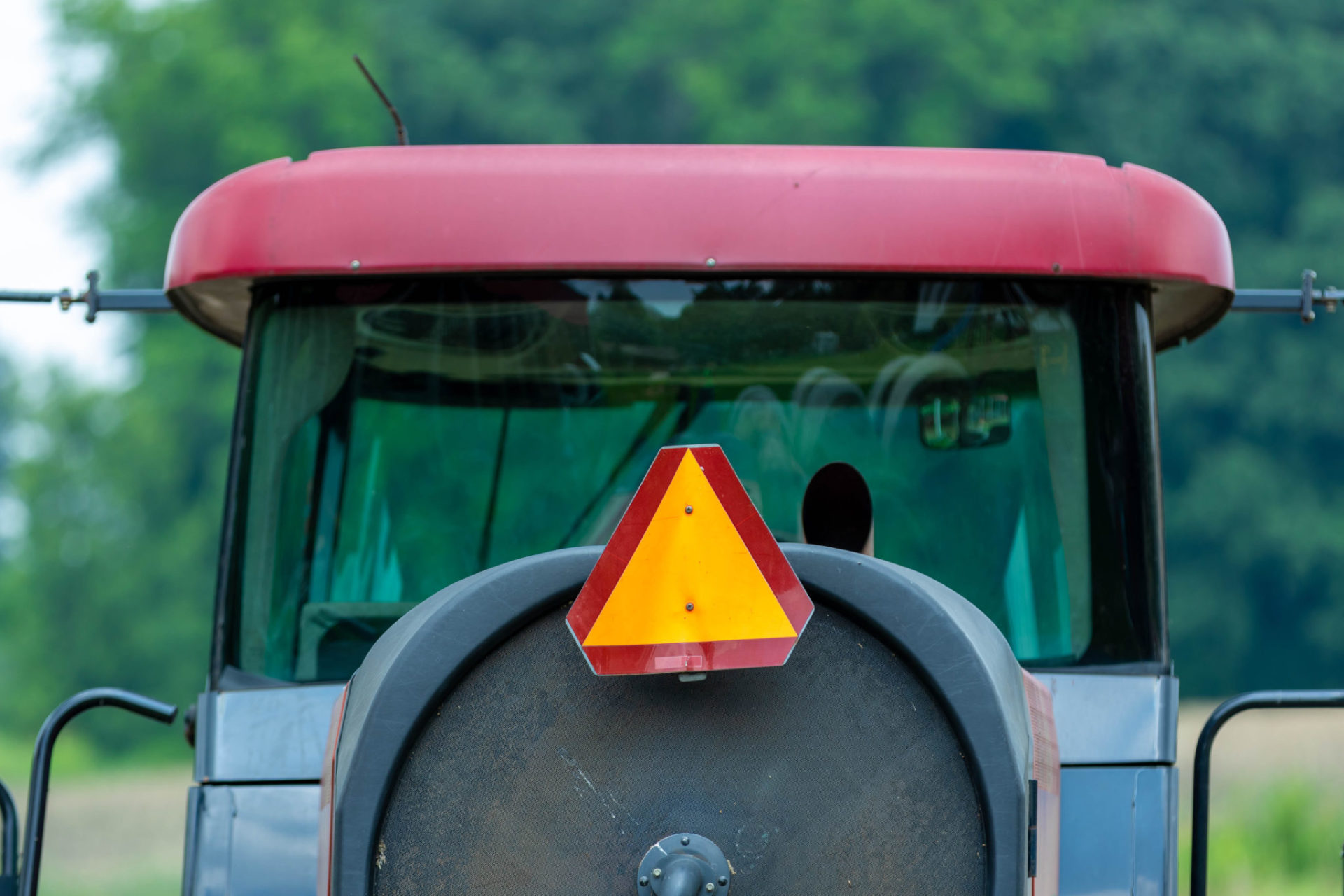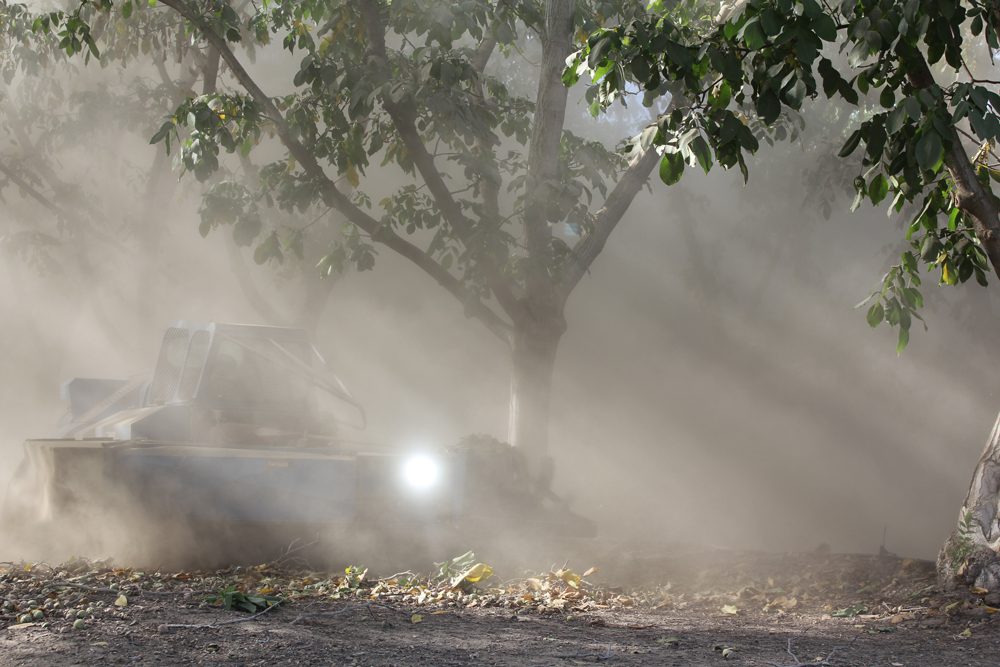
Harvest is rapidly upon us and given the challenging circumstances of the last few months, it is easy to be sidetracked while focusing on those timely issues. Nonetheless, it is critical to remember that this time in the season exposes our operations to some of the greatest risk and as such, we must be vigilant in the steps we take to mitigate those potential problems. There are four areas to consider as you prepare your team for the safest possible harvest: night work, moving equipment between orchards, operation of equipment in the orchard, and ground crew risk.
Night Work
As previously shared, CalOSHA has developed a new night work in agriculture standard that took effect July 1. Many nut growers use the time between sunset and sunrise to manage a variety of tasks, not only connected to harvest, but the overall operation of the orchard. As such, it is essential that the elements of this new regulation be followed. Ensure that all workers, both operating equipment or working in a ground crew, are provided Class 2 high visibility clothing, such as a vest or jacket.
In addition, workers that must be trained at the start of each shift where they will be working at night in the hazards of that particular orchard, including water hazards and high traffic areas, as well as the location of restrooms, drinking water, handwashing facilities, rest and meal break areas, and the designated area for parking their personal vehicles. Keep in mind that this training must be provided to a crew or a lone worker and, as with all employee training, must be documented.
Lastly, and most importantly, is the provision of light through hands-free portable personal devices, such as head lamps, and/or area lighting. One source, the other or a combination of the two is satisfactory to meet the requirements of this standard. The following table, taken directly from the regulation, outlines the amount of light that must be present given the type of work being conducted:

It is important to note that the standard requires lighting for tractors, self-propelled farm equipment and trucks. David Hornung, MPH, CIH, Cal/OSHA Heat and Agriculture Program Coordinator, clarified that in this instance, “truck” is referring to an automotive vehicle, or pick-up truck. In email communication with AgSafe, he noted that “the goal here is to have trucks and other farm equipment moving in private roads and fields turn on their headlights an hour before sunset. They should also have functioning rear lights or tail lights.” For more information on the night work in agriculture standard, visit www.dir.ca.gov/OSHSB/Outdoor-Agricultural-Operations-During-Hours-of-Darkness.html.
Moving Equipment Between Orchards
Movement of harvest equipment on public roads is commonplace this time of year and requires thoughtful planning, operator training and compliance with motor vehicle laws. Develop a system for which employees will be responsible for moving equipment and ensure those individuals not only possess proper driver’s licenses, but also have been trained in the safe operation of the equipment being moved. This is true if the equipment itself is being driven on public roads or if it is being hauled on a trailer. Ensure that the equipment has clearly affixed Slow Moving Vehicle placards that are clean and visible.
Other important elements to consider and include in annual training for workers moving the equipment include:
- Develop and enforce a company policy prohibiting the use of cell phones, texting, or wearing earbuds while operating equipment, both on public roads and in the orchard.
- Be mindful of your surroundings, including traffic flow.
- Determine and review the pre-determined driving route so as to ensure there is ample room, wide enough roads, minimal congestion and overall better traffic conditions.
- Ensure the Slow Moving Vehicle sign is installed, clean and easy to see from a reasonable distance by other drivers.
Operation of Equipment in the Orchard
Over the last few decades, the nut industry has become increasingly innovative when it comes to developing custom harvesting equipment. That creativity has also created a dependence on large pieces of machinery, which pose some of the greatest risks to workers. The complexity of the machines, in combination with the dust that they generate, is the perfect storm scenario for potential accidents in the orchard.
The most impactful tool to mitigate this risk is the proper education of equipment operators. The Cal/OSHA regulation specific to the operation of agricultural equipment requires annual training of operators, regardless of their years of experience. In addition, those individuals should be trained when new equipment is introduced over the course of the season.
It is prudent to conduct pre-harvest refresher education, reviewing company-specific safety protocol, recommendations from the manufacturer on the correct way to operate the equipment, and important steps to follow to help minimize the issues caused by dust. Require operators to assess the orchard for hazards, including overhead power lines, fencing, irrigation valves and other potential obstructions that may not be obvious when driving. Lastly, ensure that equipment operators have a clear understanding and when and how ground crews will be in the orchard and their potential interaction.
Ground Crew Risk
Equipment operators are not the only workers that are in the orchard during harvest. The ground crew plays an equally important role and it is essential that both groups of workers have a clear understanding of their responsibilities, as well as how they will interact. As with equipment operators, ground crew members need to be trained in how to perform their specific jobs safely. They also must understand when and where the equipment will be in use and the steps to take to avoid inadvertent interaction.
The ground crew must also understand the role that dust plays in limiting their visibility, along with that of the equipment operators. Ensure there are designated areas for restrooms, handwashing facilities, meal and rest breaks, and parking personal vehicles so all employees know to be mindful of traffic. In addition, all employees should be provided high visibility clothing, such as a vest or jacket, to increase the likelihood that they will be seen. Finally, workers should be reminded of a company policy that should be developed and enforced, prohibiting the use of cell phones, texting while working, or wearing earbuds, all of which inhibit an individual’s ability to be responsive and alert.
As the demands of harvest continue to grow, it is imperative that growers take the time to ensure workers are prepared to safely and successfully bring this season to a close. Invest the time, energy and effort needed, all of which will be for the benefit of your operation.
For more information about worker safety, human resources, labor relations, pesticide safety or food safety issues, please visit www.agsafe.org, call (209) 526-4400 or email safeinfo@agsafe.org.










